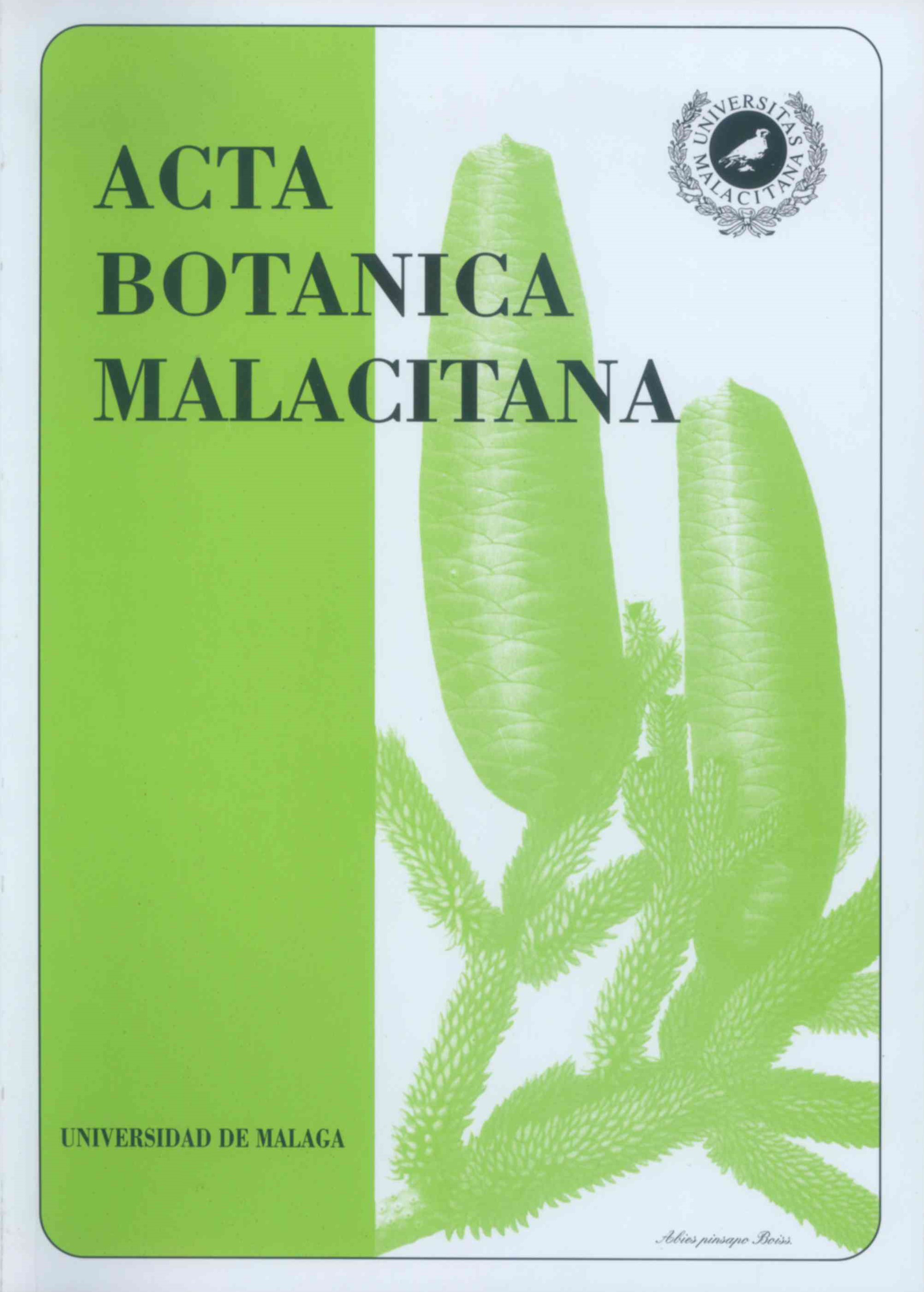Palynological study of mountain honeys from the province of Orense (NW-Spain)
DOI:
https://doi.org/10.24310/abm.v18i.8983Keywords:
Galicia, honey, pollen, characterizacionAbstract
In the following study a quantitative and qualitative analysis of thirteen samples of honey is realised. The honey is extracted from beehives all of which are located at an altitude between 600 m to 1000 m in the province of Orense (NW Spain). In eleven of the samples the dominant pollen is Castanea sativa, reaching in three of them a percentage between 80-84%. The pollen of Rubus sp. is also dominant in one of honeys studied, wich a percentage of 67%. The nine remaining honeys are polyfloral and as well as Castanea sativa and Rubus sp. other pollens are commonly present, these being: Adenocarpus complicatus, Campanula sp., Hypericum perforatum, Lotus corniculatus , Prunus sp., Crataegus mono gina and Ericaceae.
Downloads
Metrics
References
AIRA RODRIGUEZ, M.J., P. RAMIL REGO y M.P. S A?A OTERO -1990- Identificacio?n poli?nica de Ericaceae en mieles gallegas. Acta Bota?nica Malacitana, 15: 27-32.
GO?MEZ FERRERAS, C. -1985- Estudio poli?nico de mieles espan?olas. Tesis Doctoral. Universidad Complutense. Madrid.
GONZA?LEZ PORTO, AV., E. DI?AZ LOSADA y M.P. SÁA OTERO -1991- Espectro poli?nico de mieles orensanas. Vida Api?cola, 49: 47-51.
JATO, M.V. e I. IGLESIAS -1989- Oscilaciones del contenido poli?nico de mieles orensanas. Apiacta, XXIV: 82-86
JATO, MV., A. SALLA-LLINARES, M.I. IGLESIAS y M. SUA?REZ-CERVERA -1991- Pollens of the honeys fron norhwestern Spain. Journal of Apicultural Research. 30(2): 69-73.
LOUVEAUX, J.A., A. MAURIZIO & G. VORWOHL-1978- Methodsof melyssopalynology. Bee World, 59(4): 139-I 57.
MAURIZIO, A.- I 939- Untersuchengen zurquantitativen pollen analyse des honigs. Mitt. Geb. Lebensmitelters, 30(1-3): 27-69.
MAURIZIO, A & J. LOUVEAUX -1965- Pollens de plantes mellife?res d'Europe. Unio?n des groupements Apicoles Francais, Paris 148 pp.
PE?REZ DE ZABALZA, A.I. y C. GO?MEZ FERRERAS -1988- Ana?lisis poli?nico de mieles de la Navarra hu?meda del noroeste. Acta Salmanticiensa Bib. Ciencias, 65: 239-245.
PE?REZ DE ZABALZA, A.I. -1989- Estudio palinolo?gico de las mieles de Navarra. Tesis Doctoral. Universidad de Navarra. 385 pp.
SA?A OTERO, M.P., P. RAMIL REGO y M.J. AIRA RODRIGUEZ -1991- Ana?lisis poli?nico de mieles procedentes de las provincias de Lugo y Orense. Nova Acta Cienti?fica Compostelana (Biologi?a). 2: 57-63.
SA?NCHEZ CUNQUEIRO, C. y C. SA?ENZ LAINZ -1982- Ana?lisis poli?nico de mieles de Pontevedra. Lazaroa, 4: 253-268.
TERRADILLOS, L.A. -1988- Estudio microsco?pico del sedimento de la miel de galicia. Tesis Doctoral. Universidad de Santiago. 232 pp.
VERGERON, P. -1964- Interpretation statistique des re?sultats en matiere d'analyse pollinique des miels. Ann. Abeille, 7(4): 349-364.
VIEITEZ, E. -1950- Palynological observations on some Spanish Honeys. Bul. Torrey Bot. Club, 77(6): 495-502.
Downloads
Published
How to Cite
Issue
Section
License
All information related to the licensing of published works in Acta Botanica Malacitana and copyright can be found in our Editorial Policy.







1.png)
